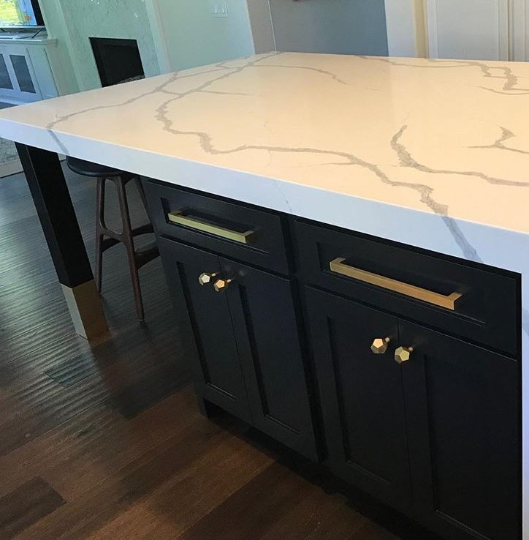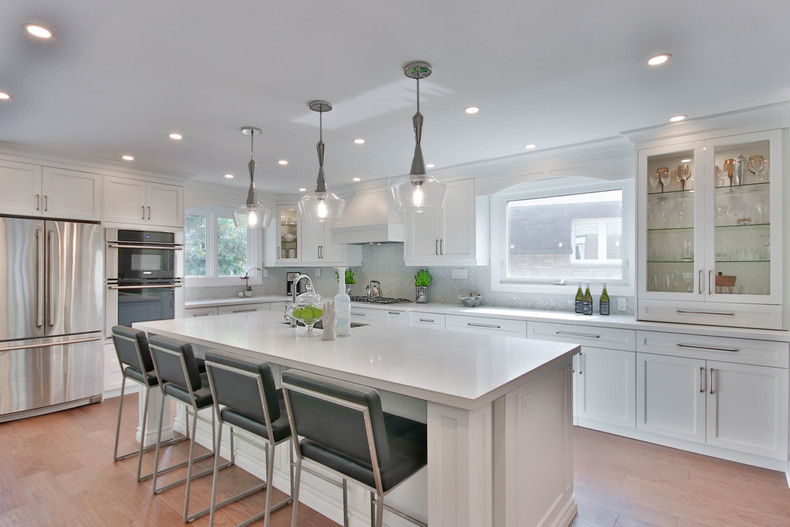Customize Your Kitchen Look with Distinct Legs For Kitchen Island Choices
Customize Your Kitchen Look with Distinct Legs For Kitchen Island Choices
Blog Article
Trick Factors To Consider for Locating the most effective Legs For Kitchen Area Island for Your Design
When choosing the ideal legs for your cooking area island, a number of vital considerations come into play that can significantly impact both performance and looks. The option of height, design, and product should align with your overall cooking area design to guarantee a harmonious appearance.
Determine Your Style Preference
Identifying your design preference is vital when picking the ideal legs for your kitchen island. The legs of your kitchen area island not only offer a functional function however likewise add significantly to the overall visual of the area. For that reason, identifying your layout style-- be it modern, rustic, traditional, or commercial-- is vital.
For a contemporary kitchen area, think about smooth, minimalistic legs that complement open rooms and tidy lines. Conventional cooking areas usually prefer transformed or luxuriant legs, which can include a touch of elegance and class.
In addition, consider the height and proportion of the legs in connection with the island's surface area. This ensures the visual equilibrium and capability needed for daily usage. Analyzing the existing elements in your kitchen area, such as cabinetry and devices, can additionally assist your decision, making sure cohesiveness in design. Ultimately, your design choice will affect not only the option of legs yet also the overall consistency of your cooking area's layout.
Select the Right Product
Picking the right product for your kitchen island legs is crucial in ensuring both longevity and visual charm. Numerous products supply distinctive advantages, and the choice often shows your style choices and useful demands.
Wood is a prominent choice, supplying heat and adaptability. It can be stained or painted to match your kitchen design, making it adaptable to various styles, from rustic to contemporary. Wood may require routine maintenance to preserve its look and integrity.

If you look for a special touch, take into consideration acrylic or glass materials. They can produce an impression of space and agility in your cooking area, making them an excellent choice for smaller locations - Legs For Kitchen Island. These alternatives may call for cautious handling and upkeep to stay clear of scrapes.
Inevitably, the product you pick must straighten with your cooking area's overall style, ensuring that the legs serve both attractive and practical objectives.
Consider Elevation and Percentages
When creating a kitchen area island, height and percentages play a crucial role in guaranteeing capability and convenience,. The conventional height for a kitchen island commonly ranges from 36 to 42 inches, aligning with traditional counter elevations or bar elevations, specifically. This dimension is essential for harmonizing with surrounding counter tops and stools, allowing simplicity of usage throughout meal preparation and social interactions.
Additionally, the island's percentages need to match the total kitchen layout. A well-proportioned island ought to not bewilder the area; instead, it needs to create a well balanced aesthetic. Consider the ratio in between the island's width and length, ensuring it offers sufficient area without crowding the kitchen area. A general guideline is to keep a width of 24 to 48 webpage inches, facilitating activity and access.
Additionally, the elevation of the legs or base can affect the visual allure and capability. Taller legs may provide a much more modern-day, ventilated feel, while much shorter ones can stimulate a standard, based look. Inevitably, meticulously considering elevation and percentages will certainly result in a kitchen area island that is both visually enticing and functionally efficient, boosting the general style of the space.
Assess Stability and Resilience
A kitchen area island's legs need to not just enhance its height and proportions yet additionally supply sufficient stability and longevity to sustain daily activities. The legs are necessary to the total performance of the island, as they birth the weight of the kitchen counter and any type of added tons, such as home appliances or food prep work jobs.
When examining security, it is important to take into consideration the leg design and product. Tough steel or strong wood legs usually offer premium toughness contrasted to lighter materials like crafted wood or plastic. In addition, a bigger base can improve stability, lowering the danger of tipping or tottering during try this out usage.
Toughness is similarly vital; the legs ought to withstand deterioration from everyday use. Take into consideration finishes that protect see post versus scrapes, dents, and wetness, especially in a kitchen area environment. Evaluate the quality of construction, such as joints and fastenings, which can substantially affect the legs' lasting performance.
Eventually, investing in well-crafted legs that prioritize security and sturdiness will ensure your kitchen area island remains a reputable office for several years to come, improving your cooking experiences while preserving visual appeal.
Consider Maintenance and Treatment
Upkeep and treatment are vital factors to consider for making sure the longevity and efficiency of kitchen island legs. When picking legs, it is necessary to assess the materials utilized, as various alternatives need differing degrees of maintenance. For instance, wood legs may call for periodic refinishing or securing to avoid moisture damage and scratches, while metal legs might need routine polishing to keep their shine and protect against rust.
Furthermore, the finish applied to the legs can affect upkeep needs. A high-gloss finish might be less complicated to clean yet can show scrapes and finger prints quicker than a matte surface. It is suggested to choose products and coatings that enhance your way of living; for instance, if you frequently organize celebrations, go with sturdy products that can hold up against wear and tear.
Additionally, consider the cleansing procedure associated with preserving these legs. Smooth surface areas typically require marginal initiative, while detailed designs may gather dust and grime, necessitating more labor-intensive cleansing techniques. Legs For Kitchen Island. Ultimately, factoring in the maintenance and care required for your chosen kitchen island legs will certainly not only boost their aesthetic charm yet likewise guarantee their functional integrity with time
Verdict
In conclusion, choosing the ideal legs for a kitchen island necessitates cautious consideration of numerous factors, consisting of design style, product choice, elevation, maintenance, and security. Each aspect plays an important role in making sure that the legs not just boost the aesthetic allure of the cooking area but also provide the needed assistance and durability for daily usage. A knowledgeable choice will inevitably add to a functional and aesthetically pleasing kitchen setting.
The legs of your kitchen island not only serve a functional function but also add significantly to the general visual of the space.Upkeep and treatment are essential considerations for making certain the long life and efficiency of kitchen area island legs. Wood legs may call for periodic refinishing or securing to prevent dampness damages and scratches, while metal legs may need normal polishing to preserve their shine and prevent rust.
Inevitably, factoring in the maintenance and care needed for your selected cooking area island legs will not only boost their aesthetic charm but likewise ensure their practical stability over time.

Report this page